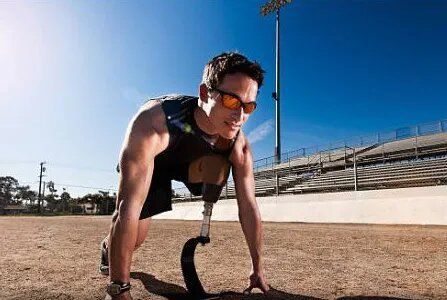Whether through an accident, tragic injury or underlying medical condition, losing a limb can be physically and emotionally overwhelming. Unfortunately, nearly
2 million people in the United States suffer from the loss of a limb.
Most people feel like they know about amputations and the use of artificial limbs, but this understanding is usually false. Due to the commonality of this issue, understanding amputations and the application and utilization of prosthetic devices is wise. With this guide, you will learn the truth behind a few common myths associated with amputees and
prosthetic products.
1. Losing a Limb Might as Well Be a Death Sentence
One of the most common misconceptions is that your life will stop after an amputation. Most people feel the loss of a limb will prevent them from completing simple everyday tasks. Also, many of these patients will lose all hope of reaching personal and professional goals. Thankfully, the loss of a hand, arm, foot or leg is not a death sentence.
With the use of a customized prosthetic and physical therapy, you can live a normal life even though you have lost a limb. While you may face numerous challenges over your lifetime, you can continue learning, working and playing after losing a limb. After your amputation, remain positive and continue working towards your goals. Your life does not stop after losing a limb.
2. One Size Fits All
Prosthetic devices allow amputees to restore their physical appearance and ability after losing a limb. Unfortunately, many amputees believe that all prosthetics fit the same. However, if you are considering a prosthetic, it is important to understand that one size does not fit all.
After an amputation or loss of a limb, the residual limb will heal differently from another person's. The socket, or interface that connects the prosthetic device to the residual limb, will also be different than another patient's socket. Due to the difference in patients’ sizes, shapes and needs, amputees must have a custom-fitted prosthetic.
During your prosthetic consultation, specific measurements will be taken of your residual limb. These measurements are then used to customize a prosthetic suited to your size, shape and comfort level. Once the prosthetic device is created, multiple fittings will also be necessary to make adjustments—ensuring the device if both functional and comfortable.
The process of designing and fitting a prosthetic device is time-consuming, but it is essential to restoring your appearance and limb function.
3. One Prosthetic Lasts a Lifetime
Another common misconception is that your new prosthetic limb will last your entire lifetime. Again, this is a myth that must be addressed.
Your prosthetic will be a large investment in both time and money, but it will not last a lifetime. As you age, your body will change. You may gain or lose weight. Or, your muscle or bone mass may decrease or increase. These slight changes can alter the way your prosthetic fits in big ways.
Over time, the interface of the prosthetic will need to be adjusted to accommodate your changing body. In addition, the size of the interface and the actual prosthetic may not fit as easily to the residual limb. This will require new sizing, manufacturing and fitting of the prosthetic.
The overall size and fit of the prosthetic is not the only factor that will limit its lifespan. Basic wear and tear play a big role in how long your prosthetic lasts. Even the best-quality, most expensive prosthetic will need to be replaced periodically over the years.
If you have lost a limb, consider a prosthetic device to improve your physical and emotional well-being. To learn more about prosthetics, contact
Huse Artificial Limb & Brace today.
















